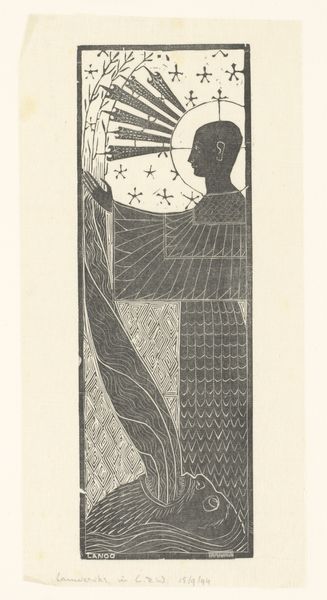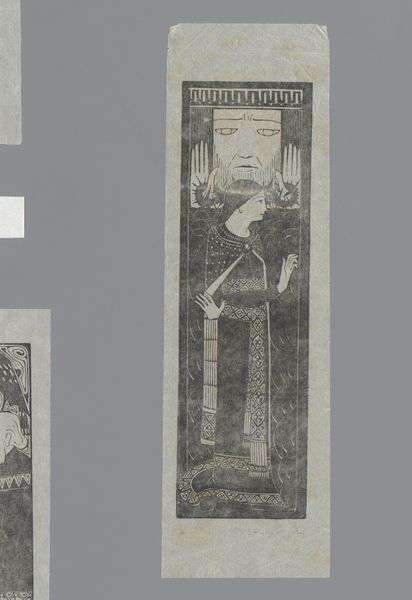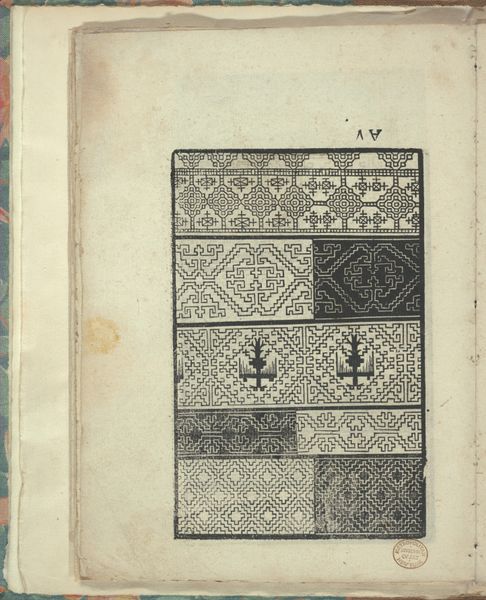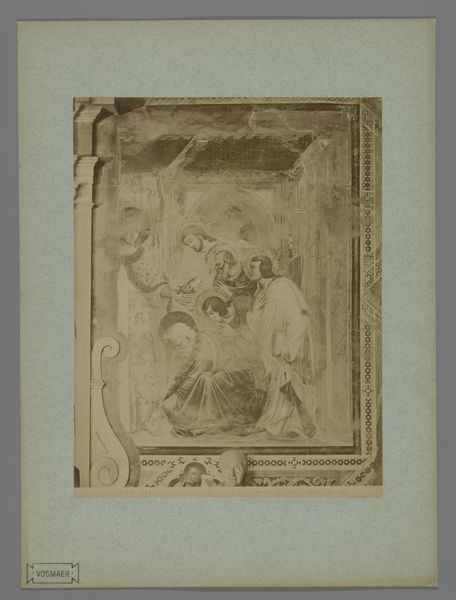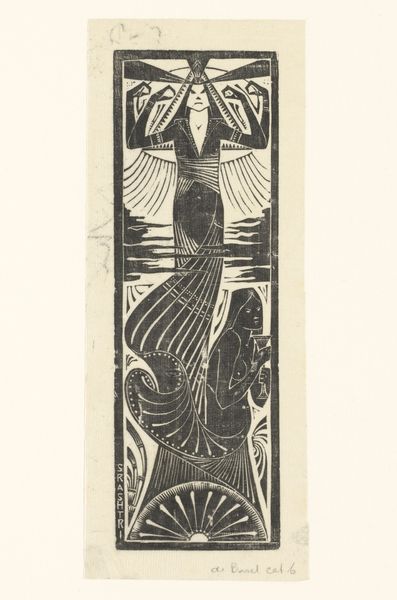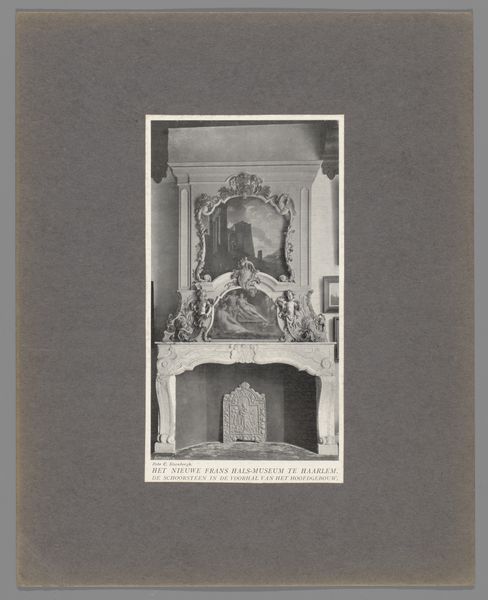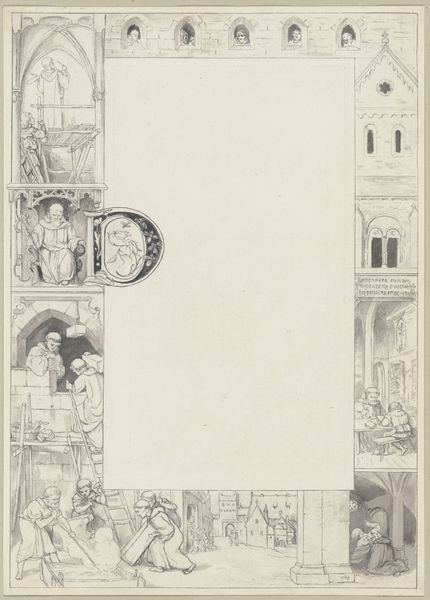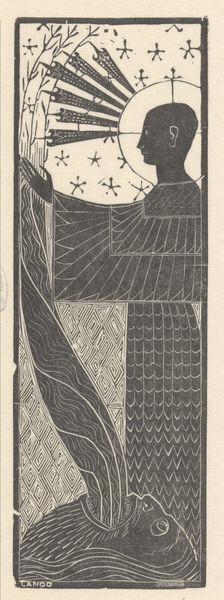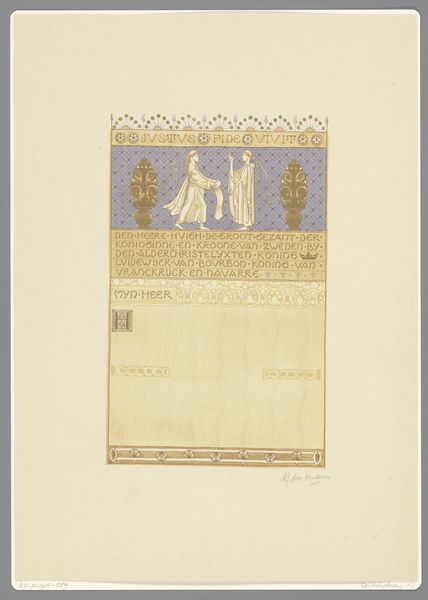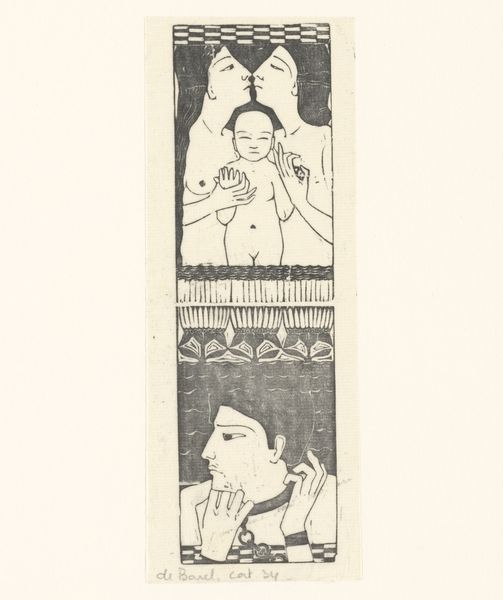
drawing, paper, ink
#
drawing
#
art-nouveau
#
figuration
#
paper
#
ink
#
line
#
history-painting
#
decorative-art
Dimensions: height 187 mm, width 64 mm
Copyright: Rijks Museum: Open Domain
Editor: Here we have "Two Royal Figures," an 1895 ink drawing on paper by Karel Petrus Cornelis de Bazel. It's a striking image – quite graphic and decorative with that repeating geometric pattern in the background. How do you interpret this work within its historical context? Curator: Well, given its date and clear stylistic links to Art Nouveau, it's interesting to consider this piece as part of the broader decorative arts movement and the political contexts embedded within the movement’s ideology. We see a deliberate move away from industrial production and towards craft, often idealized representations of the past. Do you see that here? Editor: Definitely. It looks like a conscious rejection of modern industrial aesthetics. Those decorative details and linear stylization seem like a yearning for an idealized medieval past, right? Curator: Exactly. And it's crucial to ask, who is doing the idealizing, and to what end? These royal figures are being presented within the context of anxieties about industrialization, urbanization, and the perceived loss of cultural identity in the face of modernity. The decorative arts were seen as a way to uplift society, but it’s also implicated in nation-building and asserting cultural superiority. Think of William Morris's similar aesthetic project in England. Editor: So, beyond just aesthetics, the style served a specific purpose related to cultural politics at the time? Curator: Absolutely. These images participate in broader narratives around national identity, class, and cultural value. We can ask how this image served particular socio-political agendas in the Netherlands at the time, maybe reinforcing certain notions of Dutch history. Also, the scale and distribution – where would such an image be displayed, who had access to it? Editor: That is a very thought-provoking way of considering its role at that specific time. Thank you, I’ve definitely learned a lot! Curator: Likewise; it's these contextual explorations that really bring these pieces to life, I think.
Comments
No comments
Be the first to comment and join the conversation on the ultimate creative platform.
